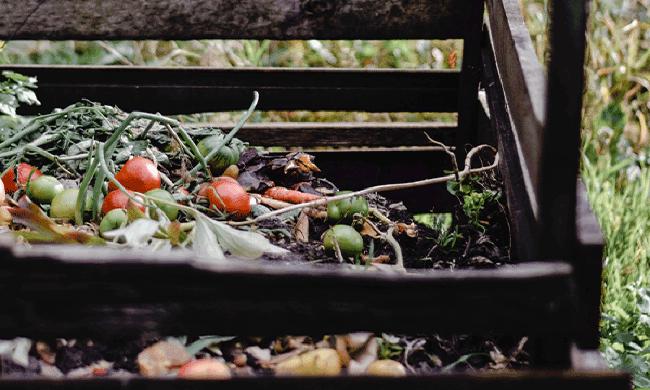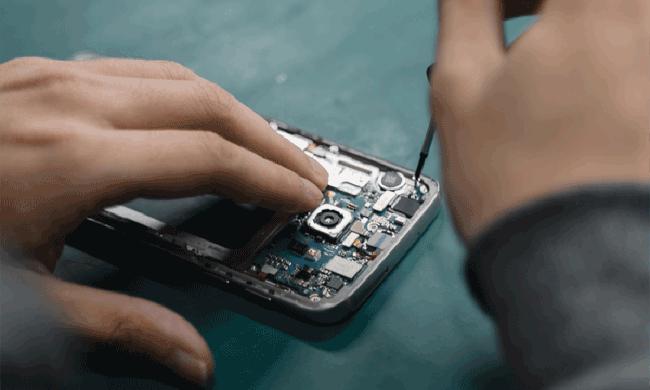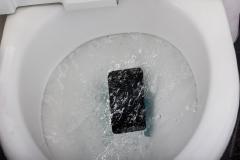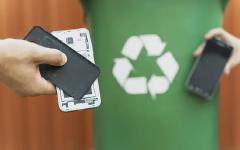Categories
Swap one thing to go green
7 minute read
Energy Saving Week falls in the third week of January every year, and it’s all about living sustainably.
But being green doesn’t have to mean turning your whole life upside down. Sometimes, changing one simple thing is enough to make a big difference. In this blog, we’ll look at a few simple ‘swaps’ that you can do to make your life a little bit greener.
Did you know? Being greener is becoming easier
Great news: most (85%) people in the Western world have become greener in their spending habits. Yippee.
Millennials and Gen Zs are the most likely to be eco-conscious, with up to 29% saying they’d go out of their way to buy sustainable alternatives to their everyday items.
What’s more, one in five people say they have sustainability at the front of their minds when they go shopping, and not just for products. From banking and finance, to travel and tourism, people are taking huge steps to be sustainable in all areas of their lives.
And the best bit? It’s getting easier and easier, with new, more sustainable products flooding onto the market every day.
Even swapping just one thing in your life could make a big difference. It could be anything, from your toothbrush to your plant pots. All that matters is you commit to the swap and make it count.
1. Swap your lights
Dimmer switches
Modern dimmer switches are pretty clever. They work by turning the current going into the lightbulb on and off hundreds of times per second. The more the current is turned ‘off’, the less energy you’ll use.
You can buy dimmer switches from your local hardware store, but we recommend asking your local electrician to fit them.
Once fitted, you’ll find yourself saving energy while making your indoor lighting more atmospheric and warmer too. It’s a win-win.
Energy-saving light bulbs
Did you know that only about 5% of the electricity a bulb uses is converted into light? The rest is wasted as heat energy; not very efficient!
Enter compact fluorescent lamps (CFLs). These clever bulbs use around 70-80% less electricity than regular light bulbs and can last up to ten times longer. CFLs contain argon and a small amount of mercury vapour, which is charged with electricity until it glows. Smart, right?
If CFLs don’t tickle your fancy, why not try LED bulbs? LEDs are the most efficient light bulbs on the market. An LED light bulb lasts approximately 24,000 hours longer than a regular light bulb and doesn’t use anywhere near as much electricity as other bulbs.
2. Swap food waste for composting

The UK produces around 9.5 million tonnes of food waste every year. That’s roughly 10 kg of food waste per person, per month. But don’t fret, cutting down your waste couldn’t be easier.
All you need to do is start a compost pile or bin. You can buy a food waste bin from most hardware stores or garden centres and keep it in your kitchen or garden.
Fill it full of anything biodegradable you don’t plan to eat, from potato peel to used cooking oil, eggshells and fruit peel. You can also chuck other household waste in there, like charcoal and all those dead houseplants you promised yourself you’d keep alive.
Once your compost bin has been going long enough, you can spread it over your flowerbeds to give your garden a little nutrition, or donate it to your neighbours through ShareWaste.
3. Swap cling film for biodegradable alternatives
Cling film is a double-edged sword. On the one hand, it keeps food fresher for up to twice as long, which reduces the amount of food waste you produce. But on the other hand, it is pure plastic.
Once you’ve thrown it away, your cling film is off to landfill. But the good news is, there are now dozens of alternatives to plastic cling film for you to try.
For instance, there’s WaxWrap, which is made from cotton, beeswax and other natural materials. And guess what? It’s reusable. Hooray.
There’s also If You Care bags, which are made from Scandinavian spruce trees.
If you fancy something a bit more heavy duty, Luckies of London make a durable, reusable paper bag with a magnetic fastening and wipe-clean interior that’s perfect for storing fresh food and leftovers.
Stretchy Lids is another handy option. They stretch over any container, whether that’s a bowl, a glass or a tray, and create an airtight seal. They’re microwave and dishwasher safe, and freezer friendly too.
Wherever you look nowadays, you’re bound to find organic, reusable alternatives to cling film, so it’s the perfect time to make the switch.
4. Get thrifting
Fast fashion can be very damaging to the environment, and the clothes and accessories aren’t the best quality. There are many different ways you can avoid fast fashion.
Charity/Vintage shops
A great way to recycle or reuse clothes is to visit second-hand shops. If you’re looking to be more sustainable, buying second-hand clothes is the way to do it. Vintage and charity shops won’t accept clothes in bad condition, so you know you’ll be getting a quality product.
You can also donate any clothes you no longer want instead of throwing them out.
Go online
Apps like Vinted, Depop and eBay are the perfect way to go sustainable when it comes to fashion. You can buy and sell individual items and the search functions mean you’ll be able to find the exact outfit you’re looking for, and for a reasonable price as well.
5. Change your diet
Changing your diet, even just a little bit, can make a big difference.
Meat production is one of the most environmentally destructive industries on the planet, so even cutting down a little bit can help make a change. You don’t have to become a vegetarian or vegan; just cutting your meat consumption by half will be more sustainable in the long run.
Buying organic or local produce will also help you be more sustainable. You know exactly what you’re getting and where you’re getting it from. Being as ‘farm-to-table’ as possible with your diet is definitely the way to go when it comes to sustainability.
6. Swap your plastic phone case for a biodegradable alternative
It takes more than 400 million pounds of plastic to manufacture the one billion phone cases produced every year. And the average phone case lasts less than two years, so many will end up in landfill or in our oceans.
So, another small but impactful change you can make is to switch to an organic and sustainable alternative.
Companies such as Wave Case, which was started by three mates in the North East of England, are starting to produce cases for almost every type of phone, still with shock-absorbing qualities, but made out of wheat straw.
And while we’re on the subject of mobile phones…
7. Swap to the circular phone economy

Since many people in the UK change their mobile phones roughly every two years, as a nation, we rack up a lot of unused mobiles.
These devices can often find their way into landfill, especially if the phone gets damaged or destroyed.
The world as a whole generates some 100 million tons of electronic waste (also known as ‘e-waste’) every year. With each phone sending copper, lithium, palladium, silver, gold and, of course, plastic, to landfill.
That’s why at giffgaff, we believe the way forward is to repair and recycle unused phones. Or what we (and others) refer to as the circular phone economy.
That’s why we started giffgaff recycle. A place where anyone (not just giffgaff members) can trade in their old phone and get cash to use against the cost of a new (or better yet, refurbished) phone from our store.
What happens to your old phone after you sell it to giffgaff? We’ll either refurbish it and sell it on, or take it apart for spare parts. Either way, we’ll make sure as few parts as possible from your old phone go to waste.
So, trading in your old phones will not only cut down on nasty e-waste, but it’ll save you a pretty penny too.
Share your ideas
So, there you have it. Some very simple ways to swap or change your habits and become a little bit greener.
Have you got any other ideas for simple, sustainable swaps? Let us know via the community.





